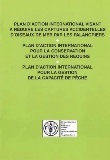Publications
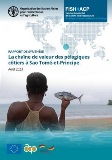
La chaîne de valeur des pélagiques côtiers à Sao Tomé-et-Principe
2023
Ce rapport présente les résultats de l’analyse de la chaîne de valeur des pélagiques côtiers à Sao Tomé-et-Principe menée de 2021 à 2022 par le programme FISH4ACP. Ce rapport contient une analyse fonctionnelle de la chaîne de valeur, évalue sa durabilité et sa résilience, élabore une stratégie de mise à niveau et un plan de mise en œuvre auquel FISH4ACP contribuera.
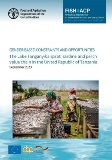
The Lake Tanganyika sprat, sardine and perch value chain in the United Republic of Tanzania: Gender-based constraints and opportunities
2023
This report presents the results of the value chain analysis of the Lake Tanganyika sprat, sardine and perch value chain in The United Republic of Tanzania conducted from 2021-2022 by the value chain development programme FISH4ACP. This report contains a functional analysis of the value chain, assesses its sustainability and resilience, develops an upgrading strategy and an implementation plan to which FISH4ACP will contribute.

Ecosystem restoration and inland food fisheries in developing countries
2023
The review presents the strong business case for inland food fisheries in developing countries to be either a co-benefit, or very often the main benefit, of ecosystem restoration. In view of the current state of inland water aquatic habitats the potential for restoration is high. Realizing this potential requires concerted action to overcome current challenges, foremost of which is the invisibility of inland fisheries in many policy arenas as well as technical and scientific fora.
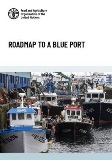
Roadmap to a Blue Port
2023
Roadmap to a Blue Port is intended to assist fishing ports to implement a Blue Transformation approach at strategic and operational level through the involvement of stakeholders, the implementation of projects and actions, and the measurement of impact.
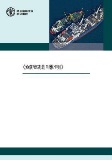
Voluntary Guidelines for Transshipment / Directives volontaires relatives au transbordement / Directrices voluntarias para los transbordos
2023
The Voluntary Guidelines for Transshipment address the regulation, monitoring and control of transshipment of fish, which have not been previously landed, whether processed or not. The Voluntary Guidelines for Transshipment address the regulation, monitoring and control of transshipment of fish, which have not been previously landed, whether processed or not.
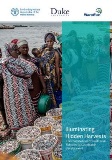
Illuminating Hidden Harvests
2023
Illuminating Hidden Harvests: the contributions of small-scale fisheries to sustainable development (hereinafter IHH) is a global study uncovering the contributions and impacts of small-scale fisheries through a multidisciplinary approach to data collection and analysis.
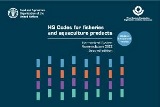
HS Codes for fisheries and aquaculture products. Harmonized System. Nomenclature 2022
2023
This publication, developed by the Food and Agriculture Organization of the United Nations (FAO), with the active support of the World Customs Organization (WCO), builds on the Harmonized System: Nomenclature 2022 edition. It presents all possible classifications for fisheries and aquaculture products by species, with a full description of each HS code, to facilitate its use within the fisheries sector, including aquaculture.
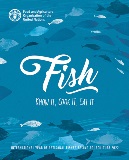
Fish: Know it, cook it, eat it
2022
Fish is crucial for global food security, providing vital protein for billions. It supports sustainable food systems and diverse culinary traditions worldwide. Learn about nutrition, avoid fish fraud, and understand environmental challenges through engaging content. Enjoy recipes from renowned chefs promoting zero waste and biodiversity.
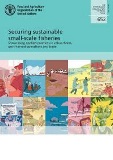
Securing sustainable small-scale fisheries – Showcasing applied practices in value chains, post-harvest operations and trade
2020
This document includes nine studies showcasing applied practices and successful initiatives in support of enhancing small-scale fisheries value chains, post-harvest operations and trade, based on the recommendations contained in the SSF Guidelines.
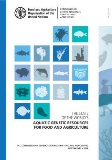
The State of the World's Aquatic Genetic Resources for Food and Agriculture
2019
The conservation, sustainable use and development of aquatic genetic resources (AqGR) is critical to the future supply of fish. The State of the World’s Aquatic Genetic Resources for Food and Agriculture is the first ever global assessment of these resources, with the scope of this first Report being limited to cultured AqGR and their wild relatives, within national jurisdiction.
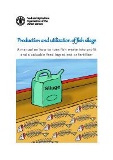
Production and utilization of fish silage
2018
The processing of fish leads to a significant removal of parts of the fish, such as heads, bones, guts, etc., these parts can represent between 30-70% of the fish. The fish silage process transforms fish waste into a liquid mix of hydrolysed proteins, lipids, minerals and other nutrients, easily digestible by both terrestrial and aquatic animals. It can also serve as an excellent fertilizer.
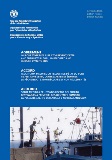
Accord relatif aux mesures du ressort de l’État du port visant à prévenir, contrecarrer et éliminer la pêche illicite, non déclarée et non réglementée
2016
L’Accord sur les mesures du ressort de l’État du port visant à prévenir, contrecarrer et éliminer la pêche illicite, non déclarée et non réglementée a pour objet de prévenir, contrecarrer et éliminer la pêche illicite, non déclarée et non réglementée grâce à l’adoption et à l’application de mesures du ressort de l’État du port efficaces et d’assurer ainsi la conservation à long terme et l’exploitation durable des ressources biologiques marines.
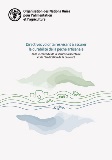
Directives volontaires visant à assurer la durabilité de la pêche artisanale
2015
Les présentes "Directives volontaires visant à assurer la durabilité de la pêche artisanale dans le contexte de la sécurité alimentaire et de l’éradication de la pauvreté" ont été rédigées comme complément au Code de conduite de la FAO pour une pêche responsable de 1995 (le Code). Elles ont pour objet de donner des orientations complémentaires concernant la pêche artisanale dans l’esprit des principes généraux et des dispositions du Code.
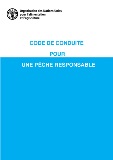
FAO. Code de conduite pour une pêche responsable
1995
Dès les temps les plus reculés, la pêche a été une source majeure de nourriture pour l'humanité. II était admis que les ressources aquatiques étaient un don de la nature d'une abondance illimitée. Mais, avec l'enrichissement des connaissances et le développement dynamique du secteur des pêches ce mythe s'est évanoui lorsque l'on a pris conscience que les ressources halieutiques ne sont pas infinies et doivent être gérées.

